Kia Sorento PHEV Premium review: Environmental friend without discount benefits
/How does the plug-in hybrid edition of a well-regarded large SUV stand up against ‘fake electric’ claims?
Read MoreHow does the plug-in hybrid edition of a well-regarded large SUV stand up against ‘fake electric’ claims?
Read MoreThis clever car gives Honda a chance to get back at the forefront of hybrid technology.
Read MoreFULLY fossil-fuelled cars are certainly not at the point of being untenable, yet surely only those so close-minded to risk being considered unhinged must accept that breaking away is not a matter of ‘if’ but ‘when’.
Manufacturers have already decided to move on; the big rush to provision products that, to varying degree, leave us better sorted for a future quite different to our present state is well and truly on.
Read More
Price: $42,490
Powertrain and economy: 2.0-litre petrol four-cylinder with electric motor, 110kW/196Nm (12.3kW/66Nm electric motor), continuously variable transmission, AWD, combined economy 6.5L/100km, CO2 161g/km.
Vital statistics: 4465mm long, 1800mm wide, 1595mm high, 2665mm wheelbase, luggage capacity 345 litres, 17-inch alloy wheels 225/60 tyres.
We like: Improved ride, coherent hybrid-specific graphics.
We don't like: Fussy drivetrain antics, no ‘wow’ moment with hybrid engagement, XV design has dated quickly.
NOW the count of cars with potential to replenish partially – as, by virtue of a plug-in hybrid set up – or wholly (so your full electric car) -is significant enough not to be ignored, where do mild hybrids stand?
The brand that changed the world with the Prius and put more than 15 million hybrids on the world’s roads insists mild hybrids will remain relevant for years yet. Toyota’s conviction is great news for Subaru, given it’s also now taking the same path as the global giant.
Interestingly, as much as the e-Boxer inserting into the XV driven here, in entry Sport trim, and a more expensive Forester variant represents a giant leap for its maker, it might nonetheless appear something of baby step in the overall scheme of electric things, if not also off the pace set by others.

Really? Well, it’d be an insult to Subaru’s engineers to call e-Boxer primitive. Yet let’s just suggest it’s hardly fortunate for its rollout to occur so soon after the RAV4 Hybrid, a certain sector rival despite some price disparity. If you’re set on the Subaru star, comparison with Toyota’s similarly-pitched product won’t help. The latter is far more advanced.
Toyota stands mention because it owns about a fifth of Subaru Corporation, the company formerly known as Fuji Heavy Industries, they also obviously co-operate (86/BRZ) and are partners on an electric car project.
It’s some surprise, then, to hear Subaru claim e-Boxer to be entirely an in-house concoct and that all the brands share is a common philosophy centred on using a combination of petrol and electric motors – capable of running individually or in tandem – to reduce economy and emissions (and without the need to charge the vehicle via a plug). When you are buddies with the world leader, you’d think every opportunity to use their talent would be taken, right? And yet …
Subaru’s claims for the degree of improvement from this driveline are hardly outrageous; they cite a 14 percent improvement in fuel efficiency over the equivalent petrol model on the urban cycle and a seven percent improvement on the combined cycle. They also cite an official overall full burn of 6.5 litre per 100km; which is nothing to brag about when in the company of a Prius or RAV4 hybrid owner and is just 0.5L/100km sharper than the official combined figure cited for a regular XV.
That’s in optimal conditions. What’ll it do in a ‘real world’ application? From my experience, not a great deal of improvement over the regular model, at least not in the environment I exposed it to.
Running up a couple of hundred kays in a mix of country and urban running delivered an average of 7.6 litres per 100km. A regular edition, with effectively the same engine, I’d driven several weeks prior over similar circumstances returned 8.3L/100km: So, in those circumstances, the hybrid remained 1.1L/100km shy of its optimal whereas the regular model was 1.3 L/100km off shy of its own target.

That suggests it’s easier to get economy from the hybrid. But it also impresses the advantages could be slight. Even if it bulls-eyed the factory claim, logically it will take years of ownership to recoup the variant’s $5000 premium. Also, it’s obvious the hybrid’s overall range will always be lower, because the electric drivetrain’s implementation asks for 48 litre fuel tank, whereas the regular car has a 68 litre tank. (Quirkily, cargo volume increases, from a 310 litres to 345).
Of course, the picture is bigger than just fuel burn alone. Emissions were lower from the e-Boxer, but not much: 147 grams per kilometre against 159 according to manufacturer figures.
So far, so damning? Well, while the overall averages were less worlds apart, there were specific instances when the e-Boxer appeared to be operating far more efficiently than the pure petrol, even if it wasn’t always when I expected it.
Hybrids are renowned for being most effective at fuel-saving around town, where they can rely more frequently on their electric motors.
From my exercise, though, the XV e-Boxer’s sweetest spot on the move appeared to occur when it was driving somewhere around 70kmh; an awkward area when most speed jurisdictions are either 50kmh or 100kmh.
The other scenario where it also leans down is when its literally crawling. So, if caught for prolonged periods in very slow traffic, it’s potentially not a bad friend. Around where I live, ‘rush hour’ at its worst lasts about 15 minutes.
So is it worth it? Not really. Above that, there’s the question of whether you even want the XV to start with. It’s no longer a particularly new product and, despite continuing improvement to the spec, has patently been left behind by the Forester, let alone quite a few cars from other makers, in how it drives and presents. The origami styling hasn’t aged particularly well, either. It’s simply not Subaru’s finest effort. And I say this from viewpoint of being a brand fan; we still own a older Forester and had the current Outback for a while.
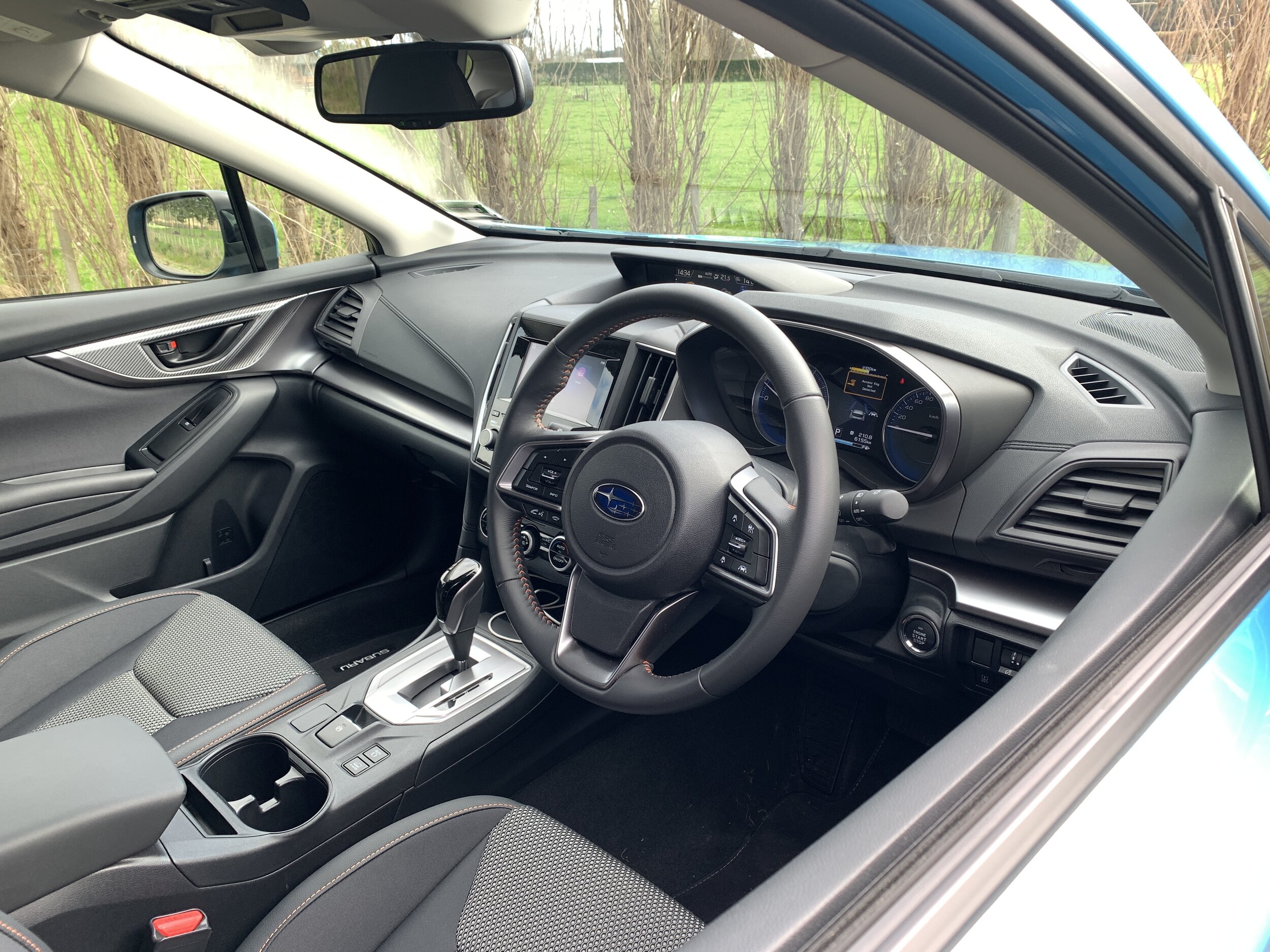
If you are going to buy in, be assured it’s at least a simple science by hybrid standards. A powertrain married to an electric motor fed by a lithium ion battery that operates mainly in tandem, but occasionally in isolation, is hybrid 101. No driving modes to manage the motor’s performance and the paddles behind the steering wheel have not been repurposed, as so often occurs, to alter the strength of the regenerative braking. Pull those and you’re moving through the pre-set change points built into the CVT.
The battery isn’t huge; outputs in isolation are 12.3kW and 66Nm of torque. Self-charging using regenerative braking energy. It combines with the engine to produce a total output of 110kW at 6000rpm and 196Nm at 4000rpm; that’s identical torque as you get with the regular XV but 5kW less power. This all feeds through a drivetrain that’s Subaru tried and true. So, permanent all-wheel-drive system and chain-and-pulley CVT, though the latter is slightly recalibrated.
The rationale for Subaru calling it a ‘motor assist’ tech and enforcing that it is more of a supplementary unit than a primary driver made increasing sense as the test progressed. For the most part, the system’s imprint was subtle.
Well, except with the starting process. That’s bound to be surprising to those used to other hybrids, in that going straight-to-electric on activating for a silent roll-away, forward or reverse, never occurs. It’ll do that stuff when the car is fully operational, yes, but at initial firing it’s always the petrol engine that kicks into life – and with quite a cacophony when cold. Going straight into burning hydrocarbons; where’s the Green ‘wow’ in that?
Time with the standard model imprinted that this engine is probably the most raucous of Subaru’s current crop of horizontally-opposed units; as much as I enjoy a good boxer burble, it’s just not a particular refined unit; the harder you rev, the louder it gets. The implantation of electric assistance lifts its manners, but not enough. It’s not a smooth experience and with the power band being narrow and a CVT that’s quite anxious to involve it can be a juggling act to keep it operating quietly and calmly.
Also, for the most part it barely feels any sharper than the non-assisted variant. The modest contribution to accelerative responsiveness is most evident with light throttle applications. Under intense acceleration – such as for overtaking – it sounds and feels no less strained.

Keeping a weather eye on the display dedicated showing the ebb and flow of the power feeds is fascinating. Even in general daily driving at even speed, contribution can be incredibly sporadic and fleeting. Don’t imagine you’ll always catch the sequence on the schematic indicating when all the handovers occur and don’t take it for granted that the electronic warble the car emits when it is running in EV mode below 24kmh won’t continue momentarily into the period when the engine re-engages.
The best chance of achieving a feel of the car being in operation on electricity alone for forward propulsion comes when you build up pace, then lift off the throttle. The engine will shut down, allowing for emissions-free coasting which, along with braking, helps replenish the battery, a process it will signal with the green ‘EV’ light illuminating on the driver display. But not for long. On anything but an ascent, though, the interaction is usually brief, perhaps just 20 seconds at most, before the car slows to a point where it needs a jolly up.
So what, then, of the proposal it can accelerate on electrons alone up to 40kmh, depending on factors? Well, good luck. Try as I might, I found it impossible to prevent the engine kicking in at anything beyond parking speeds. And kick in it does; the transition is far from subtle, with a noticeable shunt from the driveline as the engine sparks to life and the CVT flares its revs in anticipation.
Subaru’s crossovers build their reputation on being adventure wagons. You’d hope at least most owners would use them as such and, while the XV isn’t as rugged as a Forester or Outback, it does okay in its standard format.
How about the e-Boxer? Well, the positive is that the incorporation of the electric kit doesn’t seem to impinge on the design overall. Yet neither does it add to the car’s beyond-seal talent. That seems to me to be a missed opportunity. Recognition that battery-fed drive offers intriguing benefits when negotiating tricky scenarios is set to be exploited by Jeep and Land Rover. Towing also reduces. The hybrid and regular models should tow up to 650kg unbraked, but in braked situations the hybrid peaks at 1270kg, against 1400kg.

Even in situations where the hybrid is taking a back seat, other tech is working to make impression.
Subaru has really stepped up on driver assist systems and while Sport trim, as the entry level, doesn’t lend the whole package, apart from the obvious absence of Vision Assist that monitors driver behaviour and alerts to fatigue, but the main element of the core EyeSight technologies it is design to supplement are in place. There’s a Front View Monitor that compensates for the lack of front sensors, a reversing camera and Lead Vehicle Start Alert lets you know when traffic has got under way. It also has an autonomous emergency braking system, lane-departure warning and lane-keeping systems.
Graphics are quite basic, and the main menu’s set of icons look incomplete unless Apple CarPlay or Android Auto has been hooked up, which is requisite for using navigation. The screen is responsive, though.
The XV’s interior is soundly built, but is also struggling to sell itself for ambience; even though there’s decent tactility to buttons and dials, it is skewed toward functionality over flair, burdened by cheap plastics and though less busy than the Forester cockpit, is also less attractive. All sorts of clues point to it being from an age we are now fast departing; for instance, a centre console storage area that seems sized for phones of the 1990s rather than 2020s and the USB points for cellphone integration is awkwardly located.
The XV Sport trim delivers on 225/60 R17 rubber and handling attributes with or without the battery set seem similar, save that the electric encumbered models additional kerb weight – 1576kg versus 1474kg – does seem to make it a bit less sharp in cornering. That’s only really noticeable in extreme situations though and, as is common with cars of this ilk, the hybrid actually has improved ride quality; the benefits from the additional low-set weight reflect in a car that is less bothered by surface imperfections. That’s a plus point as the XV in standard form can feel a touch overly firm. Steering weighting is well judged, though a vague on-centre feel arises. Like all Subarus, it feels confident and safe on loose surfaces.
I’d have trouble recommending an XV these days and would all the more reluctant pointing anyone to the e-Boxer. The technology works, but from my experience it doesn’t do anything near enough to make a persuasive difference. And what will hurt Subaru’s chances with it is that there is at least one other model in this sector that can deliver more coherently, even if it costs a bit more.
While it’s good to see Subaru taking its first hybrid steps, it’s also really apparent they should have phoned a fri
A winning formula for Toyota’s world famous petrol-electric hardware.

Price: $39,990
Powertrain: 2.5-litre four-cylinder petrol hybrid, 131kW/221Nm (163kW total system output), continuously variable transmission, AWD, fuel economy 4.8L/100km, CO2 112g/km (Toyota NZ), 0-100kmh N/A.
Vital statistics: 4600mm long, 1685mm high, 2690mm wheelbase, 18-inch alloy wheels.
We like: Improved dynamics, refined powertrain, roominess.
We don't like: Austere GX trim, CVT, road noise.
TIME to give up on the Toyota that delivered pioneering technology to average suburban driveways all over the world?
Maybe. Not so much because hybrids are no longer the tip of the technology spear – yes, they’re old-hat, but there’s still a role – but more because the ground-breaking Prius is surely no longer crucial to Toyota and Lexus petrol-electric placement.
Those Corollas, Camrys and CH-Rs, RXs and UXs and so on are increasingly becoming the product that allow Japan’s No.1 to make ever more hybrid hay while the sun of environmental concern shines.
Implanting a battery-assisted drive-set into the RAV4 creates the most socially relevant petrol-electric Toyota of the moment.
The only mystery is why Toyota waited so long. Sports utilities of this size have become consumer favourites and the RAV4 has been a giant since its inception in 1994, with more than 8.5 million units sold globally.
What sells the nickel hydride battery-included model line is that it improves efficiency while pretty much maintaining all the positives of the non-hybrid line – a sharp chassis, aggressively rugged new styling, improved specification and more comfortable, roomier cabin.
Toyota build quality is superb and the car’s tech lift, notably with the Toyota Safety Sense package (that now includes an emergency braking system that can spot pedestrians and cyclists day and night) is a winning asset.
That’s not to say this is a product exempt from criticism. Even though it’s another new-age Toyota to display premium touches within, you cannot help but notice unfortunate cost constraint. A front passenger seat fixed awkwardly high, a touch screen with fiddly menu functions and utterly outdated sat nav graphics and, in this entry GX, trim hues that – notwithstanding this is often a fleet grade – from the bargain bin; all could surely be improved without significant effort.

The driving delivers more positively, save that it asks acceptance of a constantly variable transmission. Toyota’s is better than some, thanks to a smart ‘launch gear’ - a physical first gear that "changes up" to the CVT after 40kmh – which helps minimise flaring at kick-off. Yet there’s still irritating high-rev thrash and, overall, it demands an easier-going approach that is at odds with the car’s overall character.
The powertrain itself is otherwise quite pleasant. As per usual convention, it’ll reverse and crawl forward under electric impetus alone, but anything more than a feather-light prod will generally incite the four-cylinder petrol engine to kick in.
A 2.5-litre is relatively large capacity unit for this class of car nowadays and the output from it in isolation is fairly impressive. Add in the impetus from the electric motors and the combined output is all the more of a turn-on. Performance is punchy and the torque flow is solid from low to medium revs. It’s only when you really start to push that it loses its cool; but as said, the CVT will crack first.
You might like to push the envelope, though, because the vehicle dynamics this time around are impressive. The platform is rigid and hanging off it is a well-sorted MacPherson-strut front and multilink rear suspension that’s compliant enough to cope with bumps and uneven surfaces yet firm enough to provide tidy cornering. The electromechanical power steering delivers well, too. Only the brakes raise a flag; they don’t lack for ability but the feel is wooden, as it goes with regenerative braking.
The all-wheel-drive comes from using a 40kW electric motor mounted directly to the rear axle. That’s a far cry from hardcore tradition, but even though RAV spells out to ‘recreational activity vehicle’, Toyota never intended it to be a junior Land Cruiser.

It can run all four wheels or alternately divert power to the rears alone, uses the brakes to mimic the effect of a limited slip differential and can even handle towing. Just 1500kg, mind, so don’t get carried away at the garden centre.
Is 6.1 litres per 100km economy from my week worth crowing about? Not if you have any faith in the maker-claimed optimal of 4.1L/100km being even remotely achievable outside of a laboratory. A colleague burned a touch more from a long, exclusively open road run, whereas mine included a fair mix of urban tootling and I’m confident it could have improved if more gently driven.
Of course, it’s fair to argue that, with hybrid, the RAV4 is merely catching up with the Toyota norm and might have made more impact had it matched the Mitsubishi Outlander and gone to a plug-in rechargeable set-up.
Good news is that this expectation might not be far from being fulfilled. Talk is that a RAV with the same hardware that goes into the Prius Prime PHEV will be revealed at a motor show before too long. That’ll conceivably give us a RAV with capability of travelling up to 50km on battery juice alone. Game set and match, Outlander?
As for a fully electric Toyota? Well, one of those is coming as well. But probably not in this format.
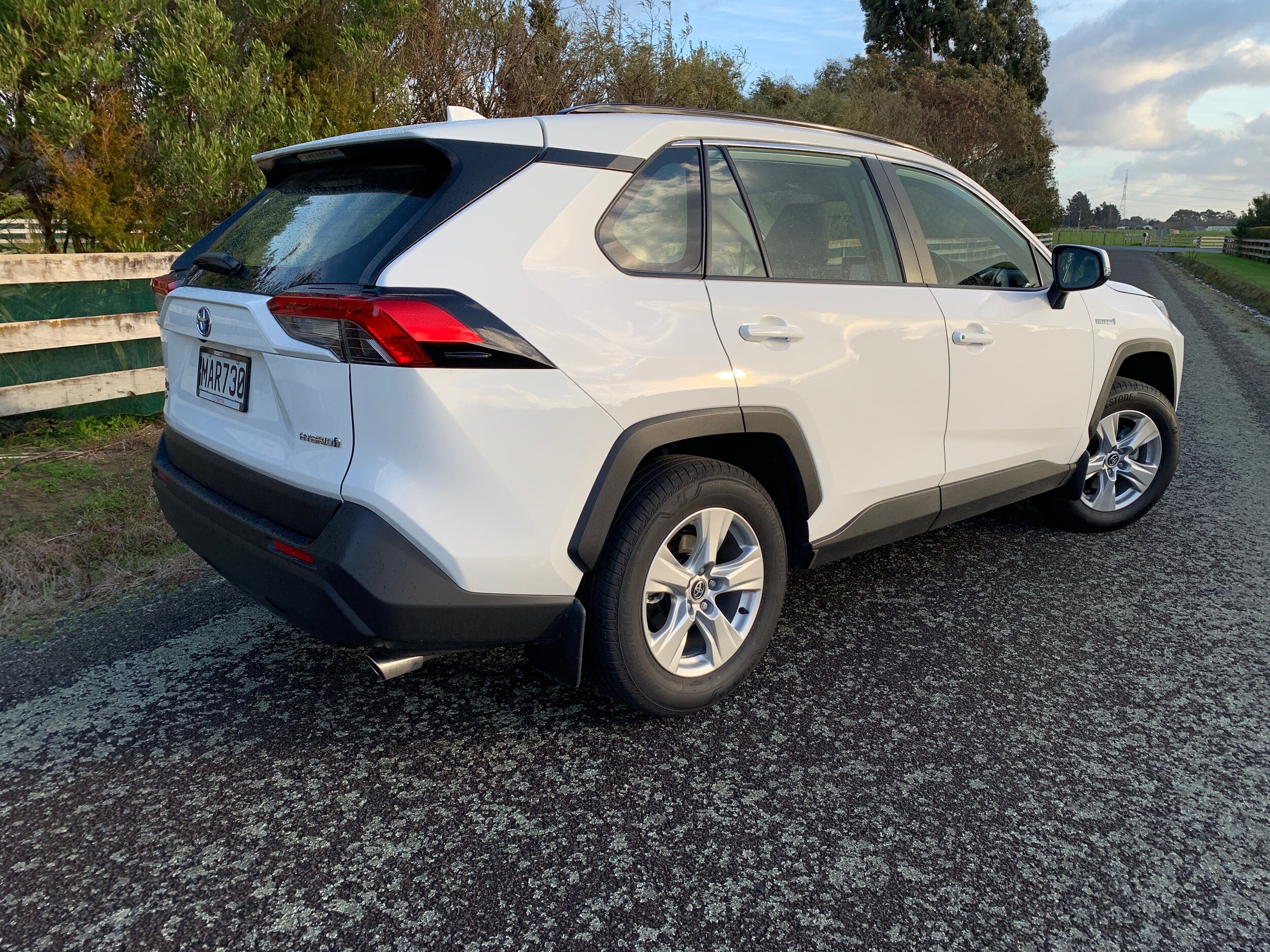

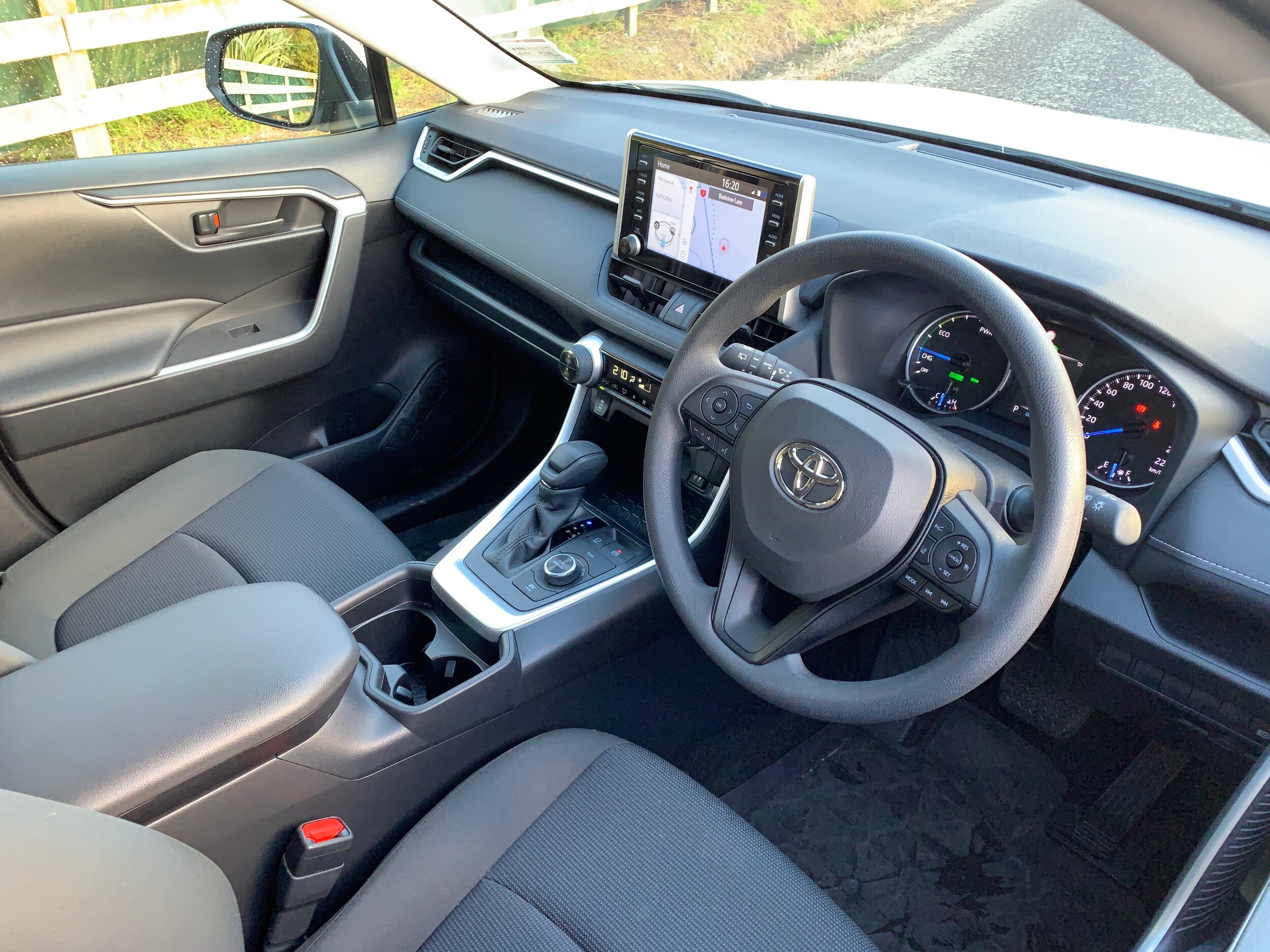
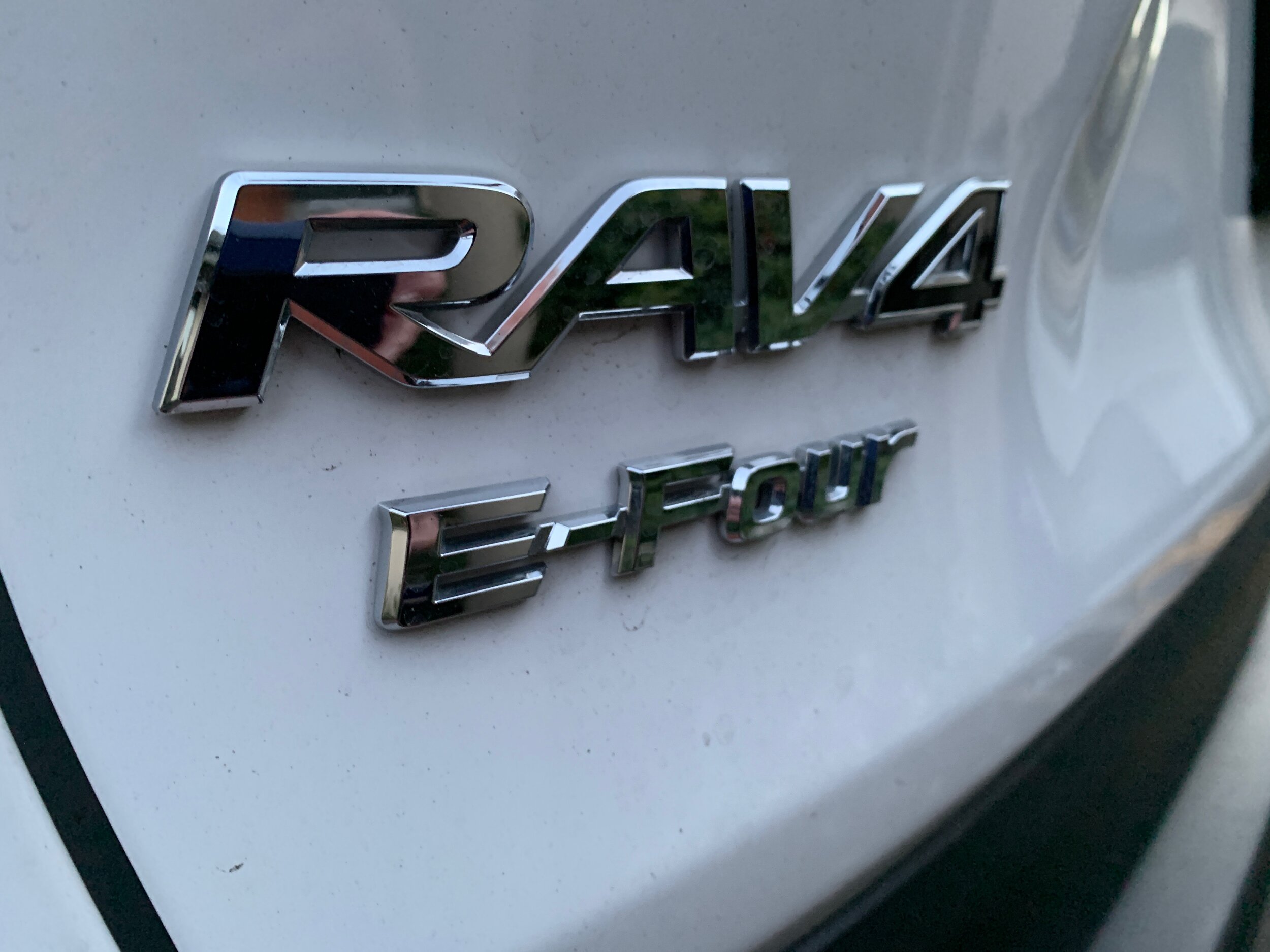
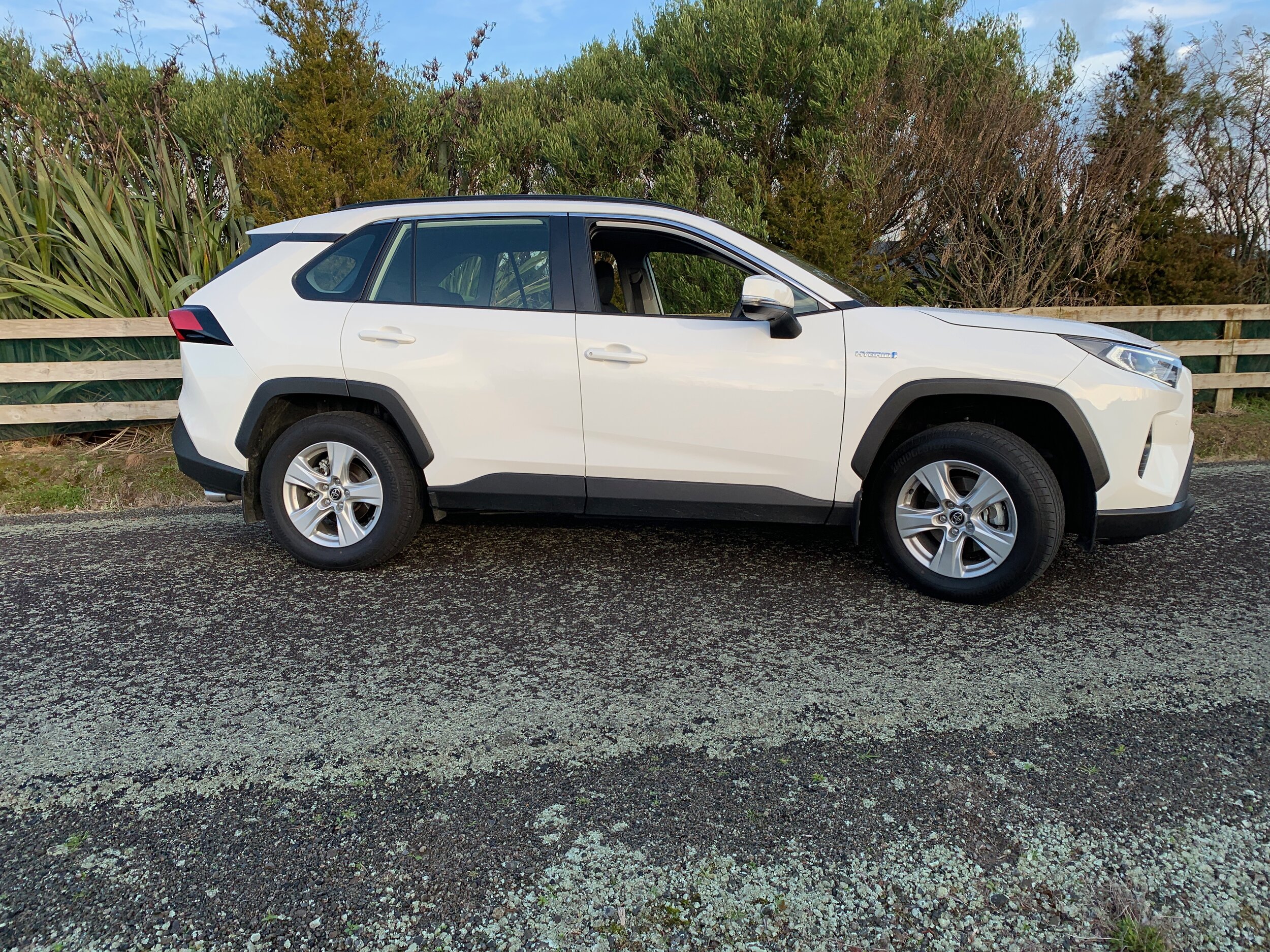
MotoringNZ reviews new cars and keeps readers up-to-date with the latest developments on the auto industry. All the major brands are represented. The site is owned and edited by New Zealand motoring journalist Richard Bosselman.